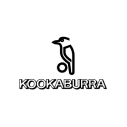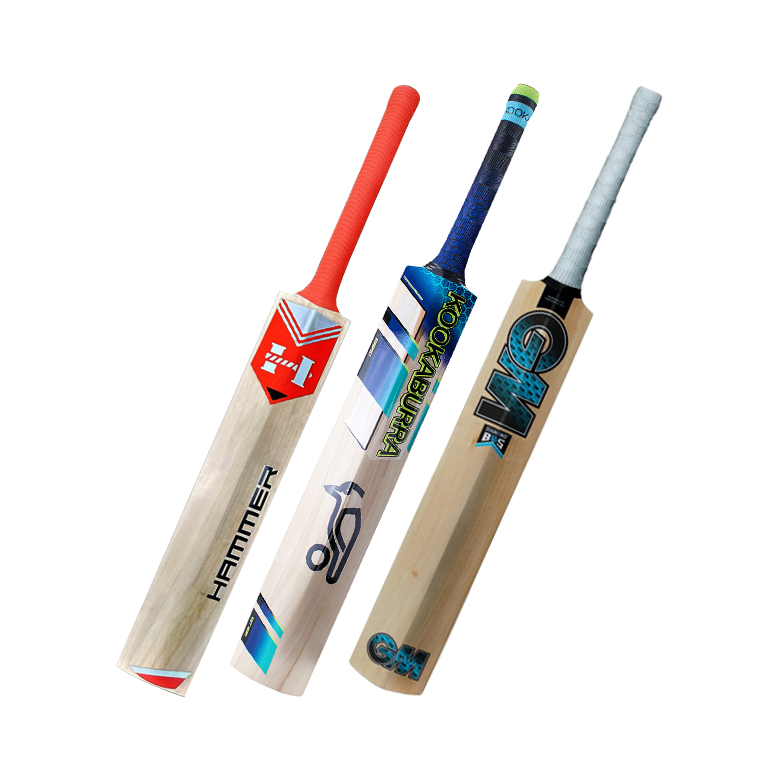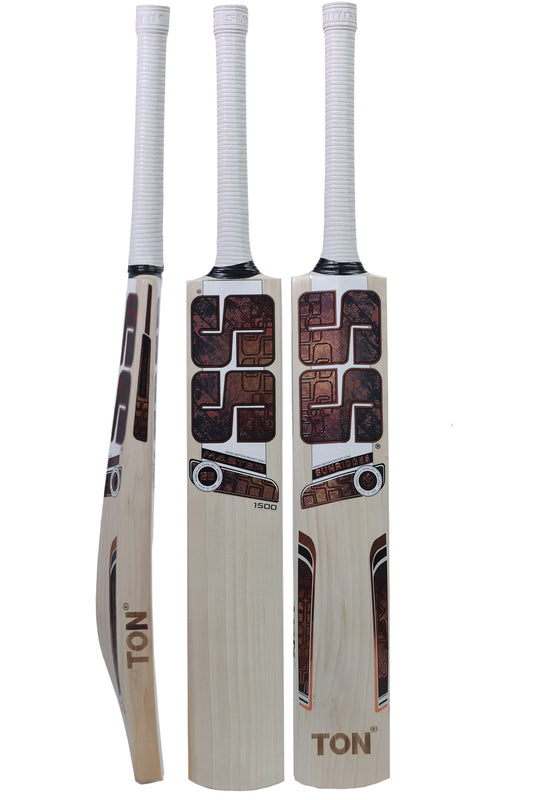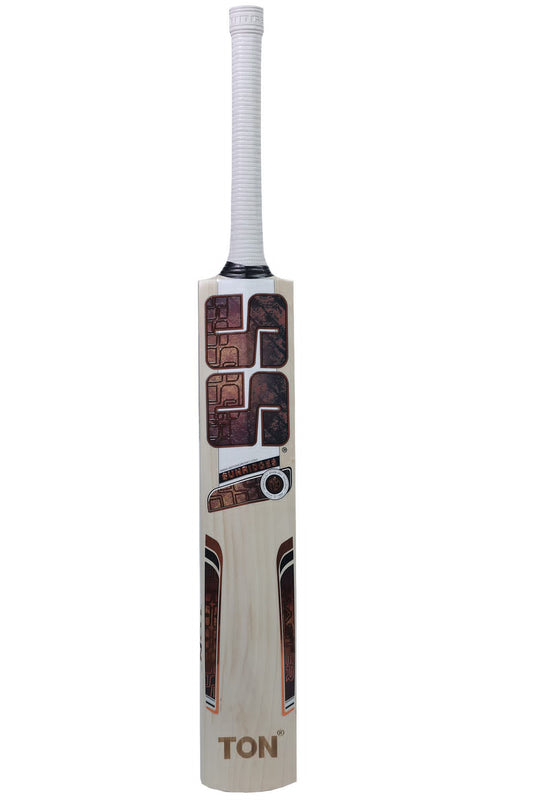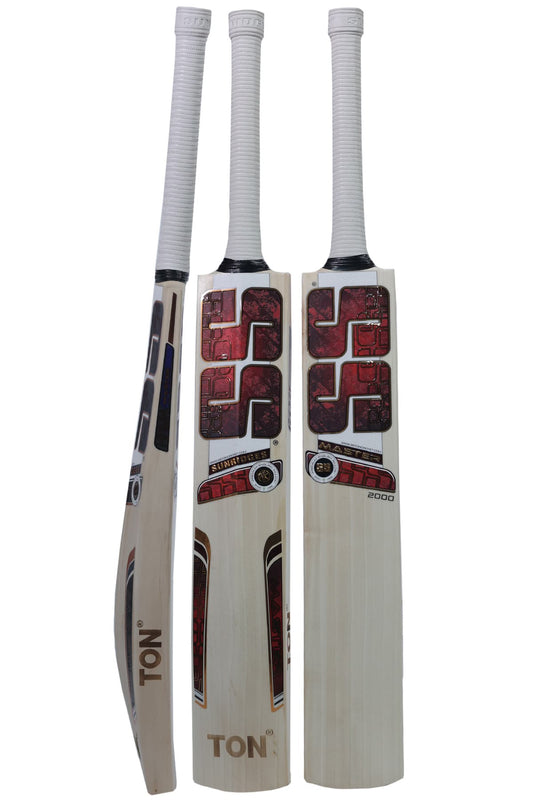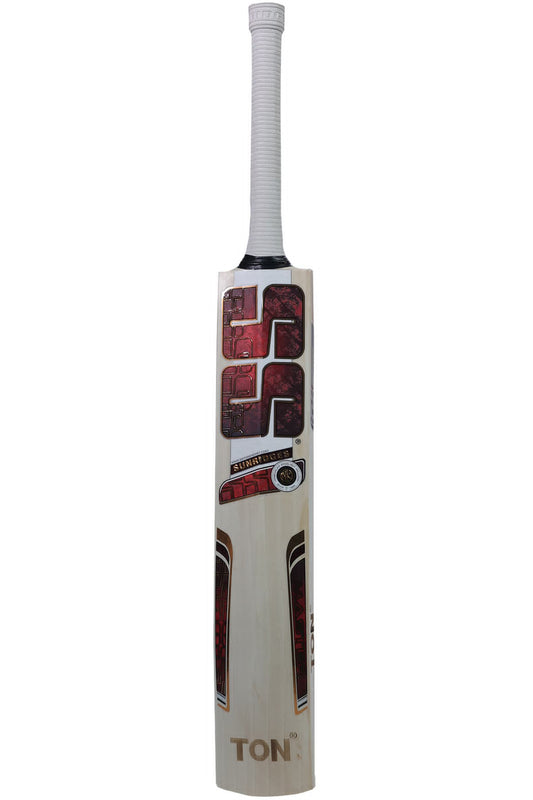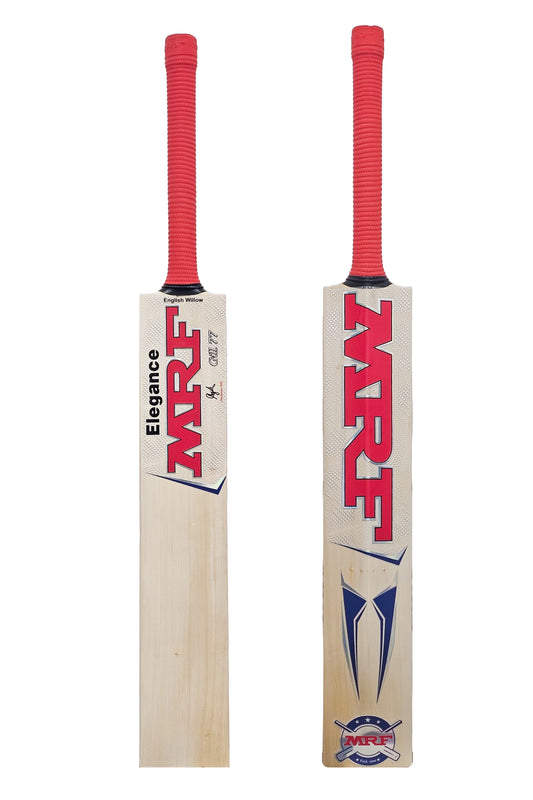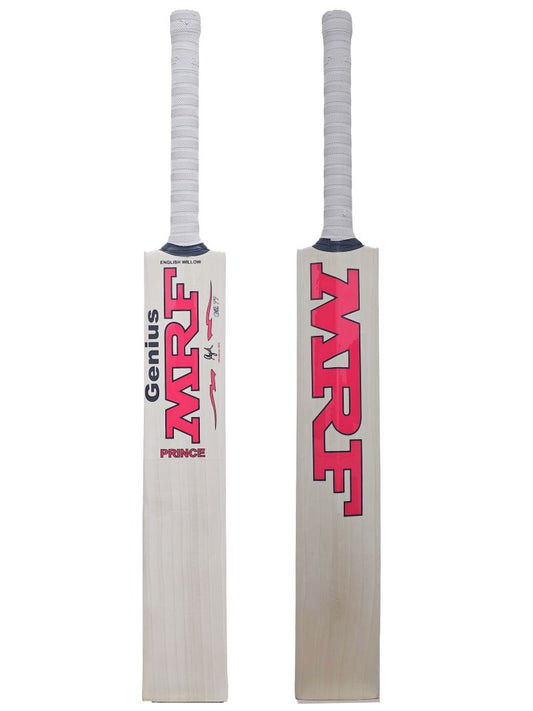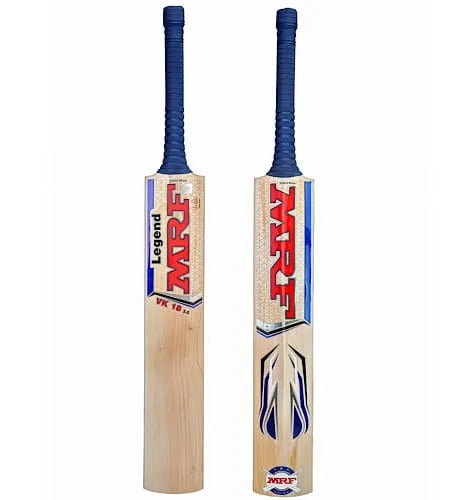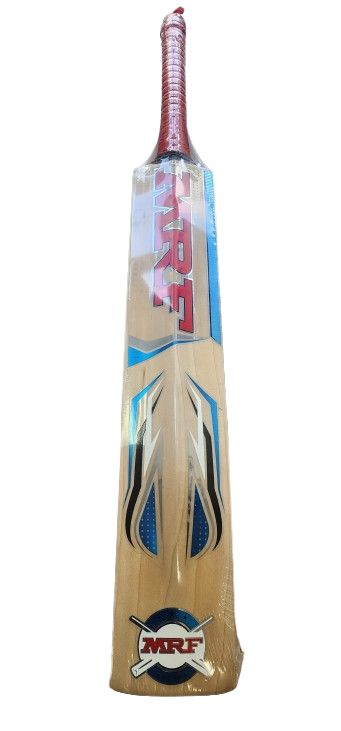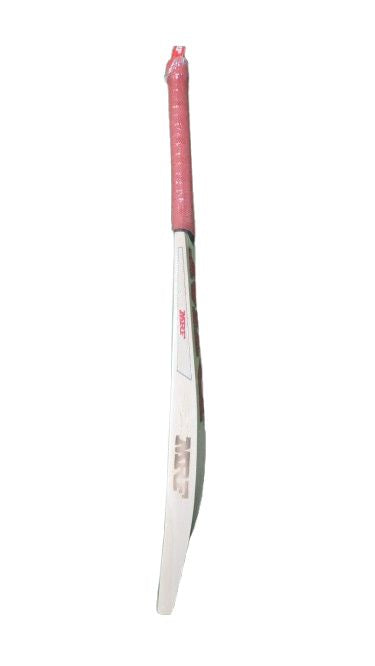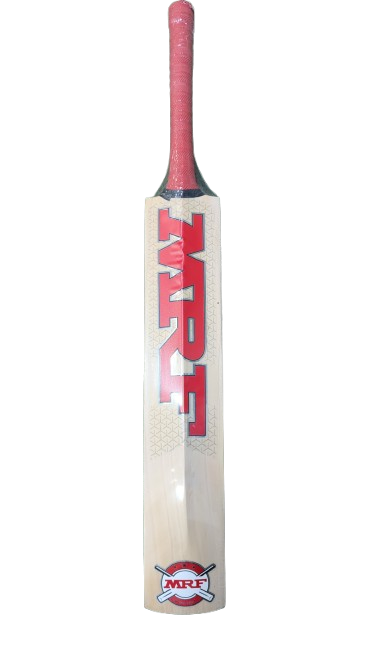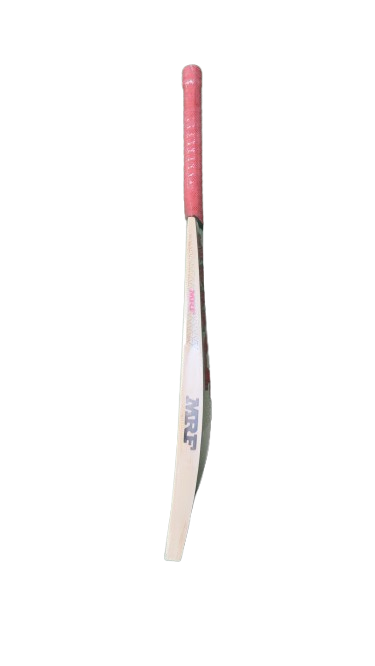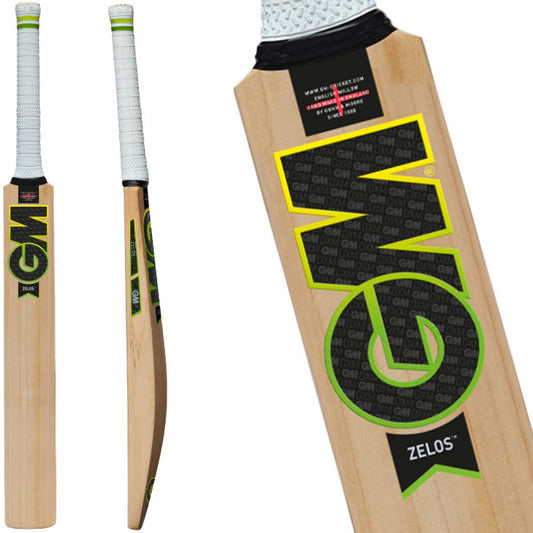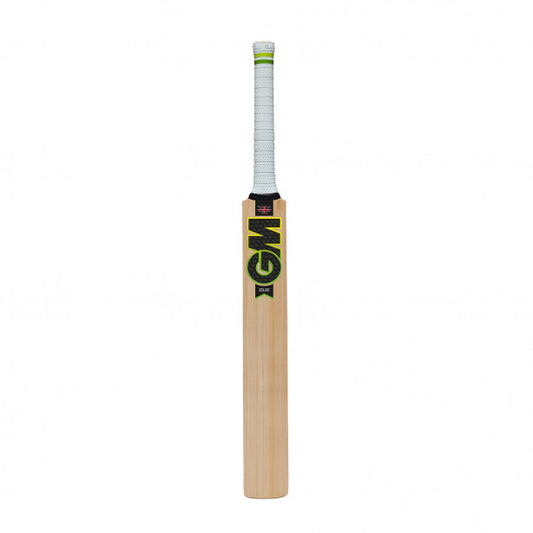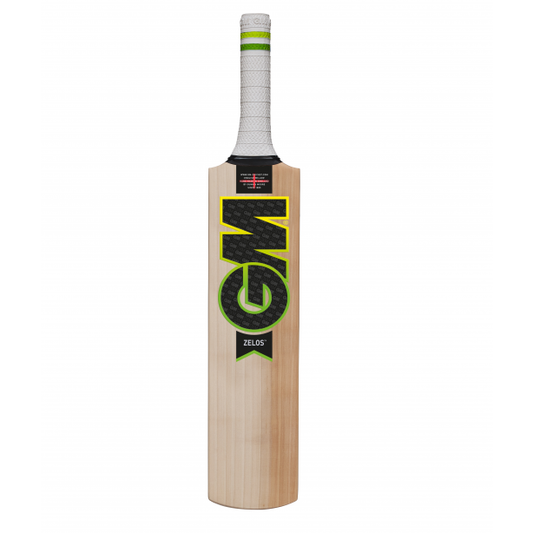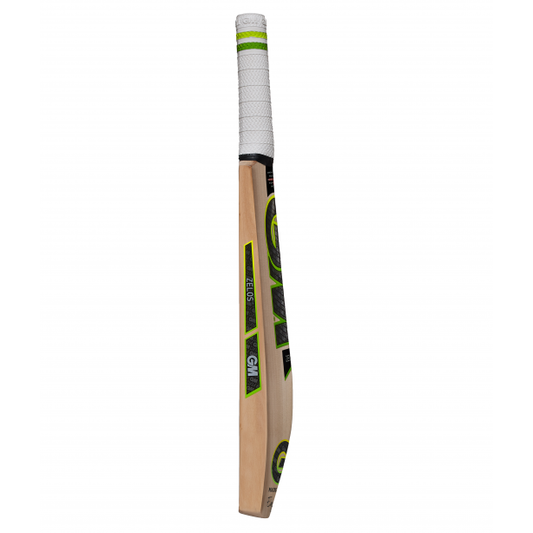Cricket Bats
Shop Bats By Brand


-
SS Vintage Finisher One Cricket Bat 2025
Save 21%Regular price $429.99Regular priceUnit price / per$549.99Sale price $429.99Sale -
SS Master 1000 Cricket Bat - 2025
Save 16%Regular price $209.99Regular priceUnit price / per$249.99Sale price $209.99Sale -
SS Master 1500 Cricket Bat 2025
Save 14%Regular price $229.99Regular priceUnit price / per$269.99Sale price $229.99Sale -
SS Master 2000 Cricket Bat - 2025
Save 15%Regular price $269.99Regular priceUnit price / per$319.99Sale price $269.99Sale -
SS Master 5000 Cricket Bat 2025
Save 18%Regular price $299.99Regular priceUnit price / per$369.99Sale price $299.99Sale -
MRF Carnage Cricket Bat 2025
Save 23%Regular price $229.99Regular priceUnit price / per$299.99Sale price $229.99Sale -
MRF Elegance Cricket Bat 2025
Save 25%Regular price $299.99Regular priceUnit price / per$399.99Sale price $299.99Sale -
MRF Genius Prince Cricket Bat 2025
Save 19%Regular price $549.99Regular priceUnit price / per$679.99Sale price $549.99Sale -
MRF Wizard Classic Cricket Bat (UK Model)
Save 18%Regular price $149.99Regular priceUnit price / per$184.99Sale price $149.99Sale -
MRF Legend VK 18 4.0 Cricket Bat (UK Model)
Save 10%Regular price $98.99Regular priceUnit price / per$109.99Sale price $98.99Sale -
MRF Legend VK 18 3.0 Cricket Bat (UK Model)
Save 12%Regular price $109.99Regular priceUnit price / per$124.99Sale price $109.99Sale -
MRF Genius Grand Edition Cricket Bat (UK Model)
Save 19%Regular price $444.99Regular priceUnit price / per$554.99Sale price $444.99Sale -
MRF Genius Grand Edition 3.0 Cricket Bat (UK Model)
Save 18%Regular price $234.99Regular priceUnit price / per$289.99Sale price $234.99Sale -
GM Zelos Narrow Cricket Bat
Save 10%Regular price $179.99Regular priceUnit price / per$199.99Sale price $179.99Sale -
GM Zelos Cricket Training/ Catching Practice Bat
Save 15%Regular price $169.99Regular priceUnit price / per$199.99Sale price $169.99Sale -
Gray Nicolls Checkmate Cricket Bat
Save 8%Regular price $549.99Regular priceUnit price / per$599.99Sale price $549.99Sale
Cricket Bats - Premium Quality Bats Online
Welcome to Cricket Store Online, featuring the most comprehensive collection of cricket bats for players at every level. Whether you're searching for a cheap cricket bats or super premium cricket bats, our extensive range ensures you'll find the perfect bat to elevate your game.
Buy Cricket Bats Online - Top Brands Available
Our cricket bat collection features the world's leading manufacturers, including GM cricket bats, MRF cricket bats, SG cricket bats, and New Balance cricket bats. Professional players trust brands like DSC cricket bats, Kookaburra cricket bats, SS TON cricket bats, and Hammer cricket bats for their exceptional performance. We also stock premium Adidas cricket bats, Gray Nicolls cricket bats, and SF cricket bats to meet every player's preferences.
Best Cricket Bats by Player Type
Men's Cricket Bats
Our men's cricket bat range caters to all playing styles and skill levels. From aggressive stroke makers to defensive players, find bats with optimal weight distribution, pick-up, and sweet spot positioning.
Women's Cricket Bats
Specially designed women's cricket bats offer lighter weights and comfortable grips, ensuring female players can perform at their peak without compromising on power or control.
Cricket Bats by Budget Range
Cricket Bats up to $200
Perfect for beginners and recreational players, these affordable bats offer excellent value without sacrificing quality. Ideal for club cricket and casual games.
Cricket Bats $200 to $300
Mid-range options featuring better wood quality and improved performance characteristics. Suitable for serious club players and developing talent.
Cricket Bats $300 to $500
Premium bats with superior craftsmanship and performance features. Popular among competitive players and those seeking professional-grade equipment.
Cricket Bats Above $500
Super premium cricket bats representing the pinnacle of bat-making excellence. These are the same specifications used by international players.
Wood Types and Specialty Bats
Kashmir Willow Bats
Affordable and durable Kashmir willow bats provide excellent value for money. These bats are perfect for hard tennis ball cricket and practice sessions.
English Willow Bats
The gold standard in cricket bat manufacturing, English willow bats offer superior performance, better feel, and longer lifespan. Preferred by professional players worldwide.
Soft Tennis Ball Bats
Specially designed soft tennis ball bats feature reinforced edges and toe protection, making them ideal for recreational cricket and training purposes.
Why Choose Our Best Cricket Equipment Store?
As the best cricket store online, we understand that selecting the right cricket bat is crucial for your performance. Our expert team provides detailed product information and blog post, helping you choose based on your playing style, skill level, and budget. Every bat in our collection undergoes quality checks to ensure you receive authentic, high-performance equipment.
We offer fast shipping, competitive pricing, and exceptional customer service. Whether you're a weekend warrior or aspiring professional, our cricket bat collection has something perfect for your needs.
Browse our complete range of cricket bats for sale today and discover why thousands of players trust us for their cricket equipment needs. Find your perfect bat and take your game to the next level!
Frequently Asked Questions
What Do Bat Grades And Grain Count Really Tell You?
When you’re sizing up cricket bats, two key details shape both the price and long-term performance: the grade of the willow and the number of grains on the blade. Recognizing how these factors influence your game helps you make an informed investment that matches your playing style and goals.
What Bat Grading Reveals About Performance
Bat grading begins with the type of willow used, English or Kashmir willow, each divided into several performance-based grades. Higher-grade English willow (such as Grade 1) offers a clean face, minimal blemishes, and tight, straight grains, delivering excellent responsiveness straight out of the wrapper. Lower grades may include minor knots or cosmetic stains. However, with proper preparation, they still offer solid hitting power and lasting durability, especially if you manage a budget without compromising too much on feel.
Understanding Grain Count And What It Means
Grain count refers to the number of visible vertical lines running down the face of the bat. Bats with 6 to 12 grains are generally older and softer, producing a quicker rebound with less break-in time. These are often preferred by experienced batters looking for instant performance.
Fewer grains indicate a younger, harder cleft that typically needs more knocking-in but offers greater long-term durability. A low-grain bat can be a wise choice for consistent returns if you play multiple times a week across a long season.
What To Consider Beyond Appearance
It’s important to remember that there's no single ideal grade or grain count. Your personal approach at the crease, match frequency, and comfort preferences should guide your selection. If you favor crisp stroke play and play on true pitches, higher-grade bats with more grains might suit you best. Lower-grain bats could be a more strategic option if longevity is a top priority.
While bat quality is essential, pairing it with the right accessories impacts your performance. A well-balanced setup, including cricket balls matched to your skill level and conditions, can significantly influence your bat's performance. Many players underestimate how much the quality and hardness of cricket balls affect bat response, stroke timing, and overall feel.
Understanding how grading and grain count affect feel, responsiveness, and lifespan can help you choose a cricket bat that meets your expectations.
Should You Choose English Willow Or Kashmir Willow For Your Playing Style?
When choosing cricket bats, the type of willow you select directly impacts how you perform and how the bat feels during play. Understanding the key differences between English willow and Kashmir willow helps you make a confident decision that reflects your playing style, skill level, and budget.
English Willow: Precision, Performance, And Feel
English willow is prized worldwide for its lightweight feel, responsiveness, and clean, straight grains. Harvested from Salix Alba Caerulea trees in England, it features a high moisture content, making it more elastic and ideal for stroke play. When you time your shots right, you’ll experience that sharp, unmistakable “ping.”
English willow offers superior control and balance for players who compete regularly or play at a higher level. These bats usually come at a higher cost and require knocking-in, but they deliver consistency, shot clarity, and enhanced feedback during match play. If you value precision and plan to fine-tune your technique, this willow supports that growth.
Kashmir Willow: Toughness With Practical Value
Kashmir willow, grown in India, is a more durable and budget-friendly option for developing players. It’s denser and slightly heavier, which contributes to long-term durability, especially useful for those in the early stages of cricket or players training under rugged conditions.
Although the grain pattern may not look as refined and the rebound might feel stiffer, you’ll appreciate its ability to withstand frequent use and various climates.
Choosing Based On Your Style, Commitment, And Conditions
If you’re playing competitively and want a responsive, finely crafted bat, English willow is the obvious step forward. On the other hand, if you’re just starting or playing recreationally, Kashmir willow offers outstanding value without compromising durability.
Matching your bat to the rest of your gear is also essential. Footwork and bat control go hand in hand, and that’s where your cricket shoes make a difference. Choosing shoes that support your stance, absorb impact, and provide solid traction enhances your bat's performance during front-foot drives and back-foot punches.
Make A Smart, Game-Ready Decision
Every player brings a different approach to the crease. Your decision between English and Kashmir willow should reflect your playing frequency, level of commitment, and how much care you're ready to invest in your gear. Your bat becomes a dependable extension of your playing strategy when paired with the right cricket shoes, gloves, and protective equipment.
Ready for your next innings? Choose from expertly selected cricket bats made for all formats and playing styles. Whether you're chasing centuries or building technique, we’ve got the right blade for your game. Shop premium options at Cricket Store Online from top brands; crafted for balance, feel, and performance, and get fast U.S. shipping, backed by advice from real cricketers.
How Do You Size A Cricket Bat For The Perfect Pick-Up?
The right cricket bat size is foundational for power, control, and shot-making consistency. A well-sized bat should allow you to play freely, turn your wrists comfortably, and unleash full shots without straining your grip or forearm.
- Align To Your Height & Build: Start by measuring your height, as manufacturers align bat sample sizes to height guidelines. If you’re under 5’4”, youth sizes (like Harrow or Size 6) often work best. Between 5’5” and 5’8”, a Short Handle bat typically fits. Those above 5’9” may benefit from a Long Handle design. But don’t just rely on charts—picking up different options is equally vital to sense what feels natural in your hands.
- Check The Handle Length: A handle that’s too long or short affects balance and control. Stand in your usual batting stance with the blade head resting against the toe of your back foot. The top of the handle should align comfortably with the inside of your groin and allow a relaxed grip, with your arms able to flex naturally.
- Weigh Versus Pick-Up: Factors such as blade profile, spine shape, and handle dynamics all contribute. Two bats of similar weight can feel drastically different. Trust your feel: the right bat should almost “disappear” in your swing, allowing for lightning-fast reaction and complete command at the crease.
- Assess Blade Width & Depth: Standard blade width meets league regulations, but the depth and swell position affect your play style. Front-foot attackers may gravitate towards a low-swell profile, while back-foot players, especially in North America’s bouncy conditions, might lean toward a mid or higher swell for enhanced leverage.
- Trial & Feedback: Practice shadow swings and basic shots in the nets, focusing on timing, balance, and follow-through. You've likely found the right fit if your shots flow smoothly and the bat doesn’t drag or twist out of your grip. Ask fellow players or coaches for a second opinion; subtle differences in pick-up become clear only after repeated use.
Sizing your cricket bat with care ensures that every inning showcases your true skill. Take the time to test, adjust, and refine; the rewards come with every cleanly struck ball.
Why Do Weight, Balance, And Sweet Spot Matter So Much?
Selecting the right cricket bat begins with understanding three core elements: weight, balance, and sweet spot. These factors influence your performance, control, and comfort at the crease.
Weight
Cricket bats are available in a wide range of weights, typically between 2lb 7oz and 3lb. A lighter bat gives you quicker hand speed, making it easier to react to fast deliveries or maneuver innovative shots. On the other hand, heavier bats can deliver more powerful strokes and are often favored by players who like to dominate with big hits. The key is to find a weight that feels comfortable in your hands.
Balance
Beyond just the overall weight, how a bat’s mass is distributed, its balance, shapes its feel and playability. A bat with a high balance point, sometimes called “top-heavy,” places more weight towards the toe. This suits aggressive players who want maximum power for front-foot driving and boundary clearing. Conversely, a low balance point, with more weight towards the handle, promotes faster bat speed and is ideal for those who play finesse strokes or react to quick bowlers. Swinging a well-balanced bat should feel effortless and let you consistently middle the ball.
Sweet Spot
The sweet spot is the area on the blade where the ball makes optimal contact for maximum power and minimum vibration. The position of the sweet spot varies: some bats are engineered with a high sweet spot to favor back-foot play on bouncier pitches; others feature a mid or low sweet spot to aid front-foot driving or power on slower, lower surfaces. Knowing your playing style, whether you prefer to play off the back foot, stay forward, or mix it up, will help identify which sweet spot location supports your best cricket.
Which Cricket Bats Are Best For Junior And Youth Players?
Selecting the right cricket bat for junior and youth players is more than just picking a size. You must match the bat with your current strength, skill level, and growth stage. A properly fitted junior bat helps you develop good habits, reduces fatigue, and encourages proper shot-making while keeping you safe at the crease.
Choosing The Right Willow For Development
Both English willow and Kashmir willow are available in junior models, and the right choice depends on how seriously you’re taking your cricket. If you’re focused on building advanced skills and competing at a higher level, English willow offers better responsiveness and feel. On the other hand, if you’re playing more casually or just getting started, Kashmir willow provides solid durability at a more affordable price.
What To Look For In Junior Cricket Bats
A junior bat should be easy to lift, well-balanced, and designed with features that support timing and confidence. Focus on bats with:
- Lightweight Profiles (2lb 3oz – 2lb 6oz): Helps you swing freely and stay in control.
- Shorter Handles & Spines: Designed to suit younger players’ reach and coordination.
- Thicker Edges & Forgiving Sweet Spots: Gives you more room for error while learning to middle the ball.
Smart Bat Features That Boost Performance
Top junior bats often have helpful features like pre-knocked-in preparation, responsive grips, and face protection. These prepare your bat for net practice and reduce the prep time before match play. Choosing the correct size, size 4, 5, 6, or Harrow, ensures you’re not overreaching or struggling with timing.
Supporting Gear That Completes The Setup
While your bat is central to performance, having the right gear around it matters too. Ensure your setup includes cricket footwear with proper grip and comfort for training and match days. The right shoes help you stay stable at the crease and sprint confidently between wickets—especially when paired with a bat tailored to your game.
How Should You Prepare A New Bat With Knocking-In And Oiling?
Before you take your cricket bat onto the pitch, it's essential to prepare it correctly. This is how you protect your investment and get the most out of every innings. Properly conditioning your bat is part of your full cricket equipment setup, helping it perform to its full potential while extending its usable life.
Oiling The Bat To Preserve The Wood
Start by applying a light layer of raw linseed oil to the bat’s face, edges, and toe. This keeps the willow from drying out and adds a base layer of protection. Just a thin coat will do, too much oil can soften the wood excessively. Leave the bat in a cool, dry place for 24 hours to let it absorb the oil naturally. Keep it away from direct sunlight or heaters, which could cause the blade to warp.
Knocking-In To Strengthen Impact Zones
Once the oil has settled, begin the knocking-in process. This involves gradually compressing the bat’s fibres using a bat mallet or an old cricket ball. Focus on the face and edges, striking with increasing force as the wood hardens. Avoid the rear and splice of the bat; these areas aren’t meant to take impact.
Take your time with this stage. Knocking in should take several hours in total and be broken into short sessions. Patience now pays off later when your bat performs better with better rebound and a reduced risk of splitting.
Testing And Final Preparation
After knocking in, start using the bat in light net sessions against older balls. This transitional phase helps confirm that your bat is match-ready. Monitor for signs of excessive denting or early cracks. Minor marks are normal, but deeper damage is a sign to ease and reassess your technique.


